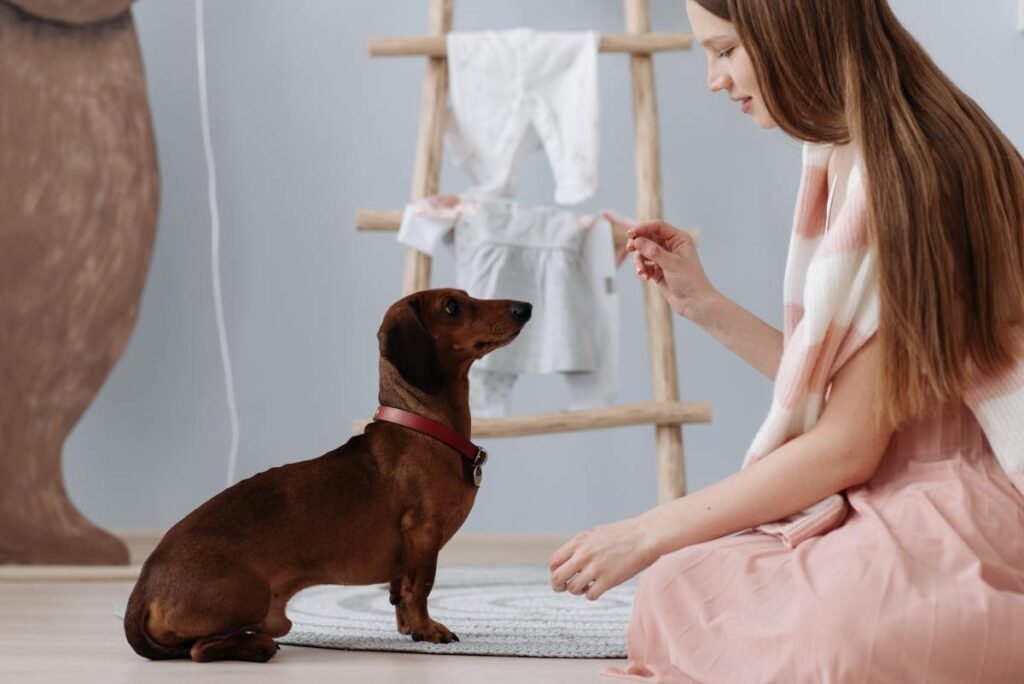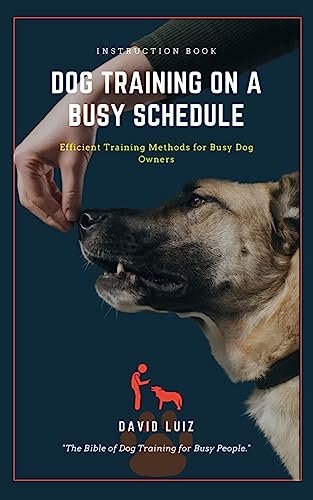Table of Contents
If you’re a dog owner looking for effective ways to train your furry companion in the comfort of your own home, then look no further. This article will introduce you to a plethora of proven techniques that have been successful in training dogs of various breeds and temperaments. Whether you’re dealing with a young puppy or an older canine, these in-home training methods will help you foster a well-behaved and obedient dog. Say goodbye to those frustrating behavioral issues and hello to a well-trained and happy four-legged friend!

Choosing the Right Training Method
When it comes to training your dog, it’s important to choose a method that works best for both you and your furry friend. One popular and effective training method is positive reinforcement. This involves rewarding your dog with treats, praise, or toys when they exhibit the desired behavior. Positive reinforcement not only helps teach your dog new commands and behaviors, but it also strengthens the bond between you and your pet.
Clicker training is another effective technique that many dog owners find to be quite successful. With this method, you use a small handheld device called a clicker to make a distinctive sound when your dog performs the desired behavior. This sound serves as a signal to your dog that they have done something right and will receive a reward. Clicker training is particularly useful for teaching your dog new tricks and complex behaviors.
Marker training is a similar method to clicker training, but instead of using a clicker, you use a verbal marker such as saying “yes” or “good.” Like clicker training, marker training involves associating the marker with a reward, making it a valuable tool for training your dog.
Creating a Consistent Routine
Dogs thrive on routine, so establishing a consistent training routine is crucial for their success. Start by establishing a schedule for your training sessions. Set aside specific times each day to work with your dog, ensuring that you have enough time to focus solely on training without distractions. Consistency is key, so try to stick to your schedule as much as possible.
Along with a set schedule, it’s important to establish clear rules and boundaries for your dog. Dogs are more likely to succeed in their training when they know what is expected of them. Make sure to communicate your expectations clearly and consistently. This can include rules about where your dog is allowed in the house, what furniture they can or cannot be on, and any house rules that you want them to follow.
Having consistency in training techniques is also essential. Stick with the training methods you have chosen and avoid constantly switching between different techniques. Dogs learn best when they can predict the outcome of their actions, so consistency in your training methods will help them understand what is expected of them.

Socialization and Desensitization
Socialization plays a vital role in raising a well-rounded and confident dog. Introduce your dog to different environments early on to help them become comfortable in various situations. Take them for walks in different neighborhoods, visit dog parks, and expose them to different sounds, smells, and sights. This will help your dog feel more at ease in new environments.
Exposing your dog to various stimuli is also an important aspect of socialization. Introduce them to different types of people, including men, women, and children, as well as individuals wearing hats, sunglasses, or uniforms. Take them for car rides, expose them to different types of animals, and allow them to experience different surfaces such as grass, sand, and pavement. Gradually increasing their exposure to new things will help prevent fear and anxiety in the future.
To aid in desensitization, gradually expose your dog to things that may initially make them anxious or fearful. Start with a minimal level of exposure and gradually increase it over time, rewarding your dog for remaining calm and relaxed. This process will help your dog overcome their fears and build confidence.
Basic Obedience Training
Teaching your dog basic obedience commands is essential for their safety and well-being. Commands such as sit, stay, come, and down are not only useful in everyday life but can also prevent dangerous situations. It’s important to use reward-based training methods when teaching these commands, as it encourages your dog to learn and respond positively to your cues.
Reward-based training involves providing treats, praise, or toys as a reward when your dog successfully performs a command. By associating the command with a positive outcome, your dog will be more motivated to listen and follow your instructions. Remember to be patient and consistent during training sessions, and always end each session on a positive note.
Once your dog has mastered the basic commands, you can start building on them. Teach them more advanced tricks or behaviors such as shake, roll over, or play dead. Building on the basics not only keeps training sessions fun and engaging but also challenges your dog mentally and provides additional opportunities for bonding.

Addressing Problem Behaviors
If your dog is exhibiting problem behaviors such as aggression, excessive barking, or separation anxiety, it’s important to understand the root cause of these behaviors. Identifying the underlying issue will help you address it effectively and prevent further problems from arising.
Once you have identified the root cause, implementing behavior modification techniques can help your dog overcome these issues. This may include counterconditioning, where you replace negative associations with positive ones, or desensitization, where you gradually expose your dog to the triggers that cause their problem behavior. Remember to seek the guidance of a professional dog trainer or behaviorist if you are unsure how to address these behaviors on your own.
Leash Training and Walking Etiquette
Leash training is an essential skill for every dog and owner. Teaching your dog to walk politely on a leash not only ensures their safety but also provides an enjoyable walking experience for both of you. Start by teaching your dog to walk on a loose leash, with no pulling or dragging. Reward them for walking calmly by your side and gently correct any pulling or lunging behaviors.
Controlling pulling and lunging can be achieved by using different techniques such as teaching your dog to walk on a specific side, using a no-pull harness or head halter, or practicing short and frequent training sessions focused on loose leash walking. With consistency and positive reinforcement, your dog will learn to walk politely on a leash.
Encouraging good walking etiquette involves more than just leash training. Teach your dog to be polite when passing other dogs or people, not to jump or lunge when excited, and to wait patiently at street crossings. By teaching your dog good walking manners, you ensure a safe and enjoyable experience for everyone involved.

Crate Training and Potty Training
Crate training is a valuable tool for both puppies and adult dogs. Introduce your dog to the crate gradually, making it a positive and cozy space for them to relax in. Start by associating the crate with positive experiences, such as feeding them inside the crate or giving them treats when they enter willingly. Never use the crate as a form of punishment.
Positive reinforcement is also crucial in potty training your dog. When your dog goes to the bathroom in the appropriate spot, reward them with praise, treats, or playtime. Consistency is key during potty training, so establish a routine for bathroom breaks and always supervise your dog until they are fully trained.
Effective potty training methods include taking your dog outside regularly, especially after meals, naps, and playtime, and using verbal cues to let them know it’s time to go. Additionally, restricting your dog’s access to certain areas of the house during the training period can help minimize accidents.
Handling Fear and Anxiety
Fear and anxiety can be challenging for dogs, affecting their overall behavior and well-being. If your dog exhibits signs of fear or anxiety, it’s important to identify their triggers and stressors. Common triggers can include loud noises, unfamiliar people or animals, or certain environments. Once you have identified these triggers, you can begin to address them effectively.
Counterconditioning is a technique that can help your dog overcome their fears by associating the trigger with something positive. This involves gradually exposing your dog to the trigger at a low intensity while providing treats, toys, or praise to create a positive association. Over time, your dog will begin to feel more comfortable in the presence of their triggers.
Implementing relaxation techniques such as massage, aromatherapy, or music therapy can also help your dog feel more at ease. Practice these techniques during calm and stress-free situations to create a positive association. Remember to seek professional help if your dog’s fear or anxiety is severe or persistent.

Training for Specific Goals
Training your dog for specific goals can be a fun and rewarding experience. Whether you’re interested in agility training, therapy dog training, or service dog training, there are various programs and resources available to help you achieve your goals.
Agility training involves teaching your dog to navigate a course of obstacles such as jumps, tunnels, and weave poles. This sport not only provides mental and physical stimulation for your dog but also strengthens your bond and improves their overall obedience skills.
Therapy dog training focuses on teaching your dog how to interact with people in hospitals, nursing homes, schools, or other therapeutic settings. These dogs provide companionship and emotional support to individuals in need, making a positive impact on their lives.
Service dog training is a more specialized form of training, focusing on teaching dogs to assist individuals with disabilities. These dogs are trained to perform specific tasks to assist their handlers and enhance their independence.
Maintaining Training and Encouraging Continued Learning
Training should be an ongoing process throughout your dog’s life. Regular practice sessions are essential to maintaining the behaviors and commands your dog has learned. Reserve designated time each day for training, even if it’s just a few minutes. Consistency is key to reinforcing behaviors and preventing any regression.
Enrichment activities can also help keep your dog mentally stimulated and engaged. These activities can include puzzle toys, nose work, or obedience games. Keeping your dog’s mind active will not only prevent boredom but also strengthen the bond between you and your furry friend.
Joining training classes or workshops can provide additional opportunities for learning and socialization. These environments offer support and guidance from experienced trainers, allowing you to enhance your training skills and address any specific challenges you may face.
By utilizing these effective in-home dog training techniques, you can establish a strong foundation of obedience, address any problem behaviors, and enhance the bond between you and your dog. Remember to always approach training with patience, positivity, and consistency, and seek professional help when needed. With your dedication, your dog will thrive and become a well-behaved and happy member of your family.



